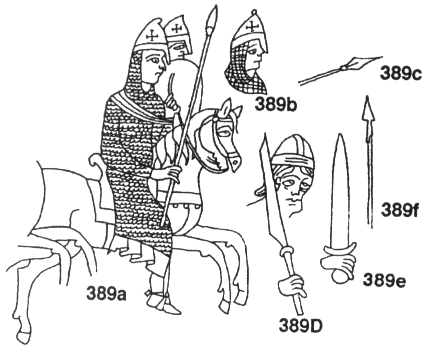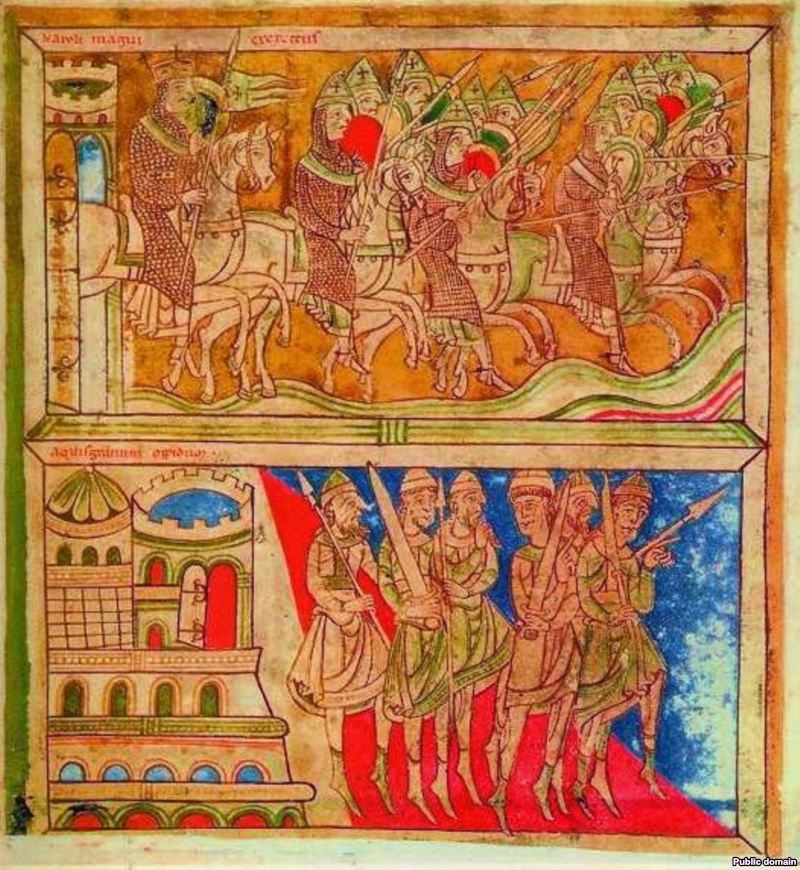Codex Calixtinus (Liber Sancti Jacobi), 1135-1139AD
Folio 162v
Charlemagne, Roland and the Knights on their way to Compostela, Spain
Held in the Cathedral of Santiago de Compostela, Galicia (Spain)
Note the short pole-arm carried by the right-hand infantyman.

Referenced on p.154, Arms and Armour of the Crusading Era, 1050-1350, Western Europe and the Crusader States by David Nicolle
389A-F ‘Charlemagne’s Army leaves for Spain’, Spain or France, mid/late 12th century
(Cathedral Archives, Codex Calixtinus f.162v, Santiago or Compostella, Spain)
This manuscript may have been illustrated by a French hand, and most of the arms and armour are straightforward.
One helmet has an apparent button or suspension ring on top (B) and a second (D) is of the archaic southern French, pseudo-Roman, two-piece type.
The same warrior (D), an infantryman, also carries an unusual though far from unknown weapon with a long asymmetrical blade and a short halt,
which is also seen in French sources and might be a fausar.
One spear (F) is shown with a split socket, a rather old-fashioned system normally associated with the British Isles.
Referenced as figure 592 in The military technology of classical Islam by D Nicolle
592. Manuscript, "Charlemagne leaves for Spain," Codex Calixtinus, late 12th century AD, French or Spanish, Archivo Catedral, f. 162v, Santiago de Compostella (Fos).
Frankish Knight c.1150 in Armies and Enemies of the Crusades 1096-1291 by Ian Heath, based on the Codex Calixtinus (Liber Sancti Jacobi)
See also Frankish, Saracen & Byzantine costume in the 'Melisende Psalter', Jerusalem, 1131-43 AD
Exultet Roll from Fondi, Campania, Italy, 1136AD, BnF NAL 710
Judas Maccabeus portrayed as a Polish knight in the Plock Bible, second quarter of the 12th century
12th century German soldiers in the Admont Bible, Salzburg, c.1140
Other Spanish and North African Illustrations of Costume & Soldiers
Other 12th Century Illustrations of Costume & Soldiers


